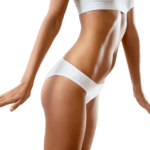Breast Reduction in Alpharetta, GA
Breast Reduction Consultation
At The Graivier Center, we value our personal relationships with our patients. Each patient is treated as an individual, and as such, is given a personal consultation prior to any treatment. Dr. Graivier and his staff will meet with you to help you make decisions regarding which procedure(s) or treatment(s) will result in achieving your aesthetic goals. The consultation will conclude with a discussion about the desired treatment, your expectations, the benefits and risks associated with the treatment and post-treatment recovery.
Breast Reduction Surgery
Dr. Graivier has modified the traditional approaches to breast reduction surgery once again to combat the “traditional” results: shorter, often squared off, bottom-heavy breasts with long, exposed incisions and remaining upper-breast flattening. Many of these people have even had to return for breast augmentation to shape their breasts and fight this “bottomed out” appearance.
In Dr. Graivier’s “structural support” technique, the axillas and outer breasts are liposuctioned to narrow the side bulges and remove tissue from the armpit area. This also serves to reduce the length of the incisions in the breast creases. The skin is elevated off of the breast tissue and the breast tissue is reduced circumferentially to best preserve the blood and nerve supply. (Women are usually able to breast feed after breast reductions, breast lifts and breast augmentation.)
Dr. Graivier then takes the breast tissue and sutures it to the upper chest fascia and muscle, thus building the “structural support” with the breast tissue. In the traditional techniques, the skin holds the breast tissue. In Dr. Graivier’s “structural support” technique, the breast tissue “holds” the skin. The upper breast fullness, shape, and cleavage are restored.
At The Graivier Center, all breast reduction patients receive a breast lift. The outer breast and axillae are liposuctioned to narrow the side bulges and remove tissue from the armpit area. This also serves to reduce the length of the incisions in the breast crease. Dr. Graivier’s technique of elevating and suturing the breast tissue to the chest muscle fascia is key to recreating the fullness in the upper breast and taking tension off the skin closures, resulting in thinner, shorter, well-hidden scars.
Laser Liposuction for Breast Reduction
For some patients, whose breasts may only require a small reduction, laser-assisted liposuction may be an option. External radiofrequency treatment can be added to stimulate further breast tightening.
Breast Reduction Recovery
After your breast reduction surgery, dressings or bandages will be applied to the incisions. A small, thin tube may be temporarily placed under the skin to drain any excess blood or fluid that may collect.
A surgical bra must be worn for two weeks post-surgery to protect the breasts and dressings, and to minimize swelling and support the breasts as they heal.
Patients will experience discomfort for the first 24 to 48 hours post-surgery, including difficulty raising arms. Some patients may experience random shooting pains and numbness in breasts for several months.
Sexual arousal may cause the incisions to swell. It is advised to avoid sex for two weeks post-surgery.
Patients may return to work, social activities and mild exercise in about 10 days.
Most of the stitches will dissolve, but there will be permanent scars. It takes at least one year to 18 months for the scars to fully mature and fade a pale pink, brown or white.
Topical creams are available to help lighten and fade these scars.
You will be given specific instructions from The Graivier Center that may include:
How to care for the surgical site and drains, if applicable
Medications to apply or take orally to aid in healing and the progression of your recovery
Specific concerns to look for at the surgical site or in your general health
Post-op follow-up appointment information
The results of breast reduction surgery are long lasting. Your new breast size should help relieve any discomforts experienced pre-surgery however, nothing can stop the natural effects of aging, which over time can cause your breasts to change.
When to Consider Breast Reduction
- If your breasts are too large for your body frame and create neck or back pain
- If your bra straps cut into your shoulders
- If you have heavy, pendulous breasts with nipples and areola pointing downward
- If you have persistent rashes underneath your breasts
- You find it difficult to buy tops or dresses that fit
- If you are unhappy or self-conscious about the size and appearance of your breasts
- If you are unhappy or self-conscious about the size and appearance of your breasts
RELATED PROCEDURES

Reduction Mammoplasty Before and After Results
Overly large breasts can cause discomfort, pain, and self-consciousness. At The Graivier Center, our reduction mammoplasty before and after gallery highlights the life-changing transformations our patients have experienced. This procedure not only enhances physical comfort by alleviating strain on the back, shoulders, and neck but also improves breast proportion and symmetry for a more balanced appearance. Dr. Graivier and his expert surgical team use advanced techniques to remove excess tissue, reshape the breasts, and create natural, aesthetically pleasing contours. Explore our gallery to see how reduction mammoplasty can enhance both comfort and confidence.
Reduction Mammoplasty Cost in Alpharetta, GA
The reduction mammoplasty cost depends on multiple factors, including the extent of tissue removal, surgical complexity, and anesthesia requirements. At The Graivier Center, we provide transparent, customized pricing to help you understand your investment in this transformative procedure. During your consultation, Dr. Graivier will assess your needs, discuss potential benefits, and create a personalized surgical plan. We also offer flexible financing options to make reduction mammoplasty more accessible. Contact us today to schedule your consultation and learn more about the cost and benefits of breast reduction surgery.
Serving Alpharetta, GA and Surrounding Areas
Located in Alpharetta, The Graivier Center is dedicated to providing expert reduction mammoplasty services to patients throughout North Atlanta, including Milton (5 miles), Roswell (6 miles), Johns Creek (7 miles), Sandy Springs (10 miles), and Dunwoody (12 miles). Our state-of-the-art facility offers a welcoming and professional environment where patients receive exceptional care tailored to their needs. If you’re seeking relief from discomfort caused by overly large breasts and want a more proportionate figure, schedule a consultation today and take the first step toward lasting comfort and confidence.












